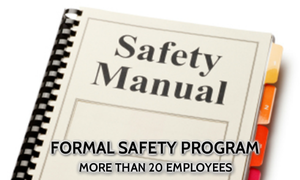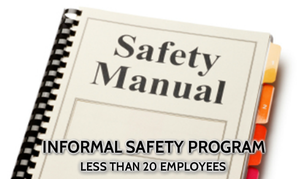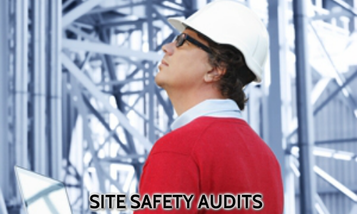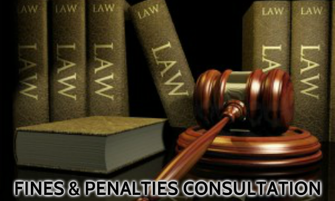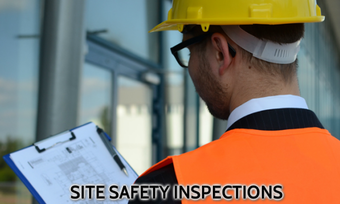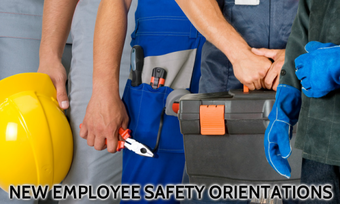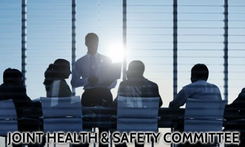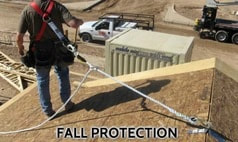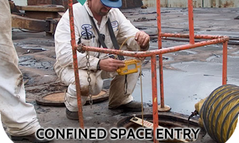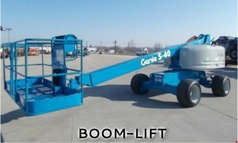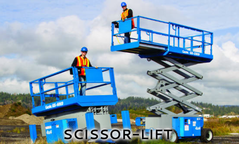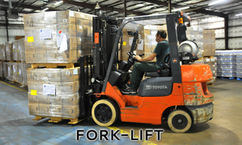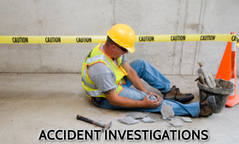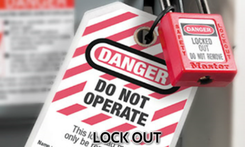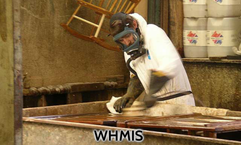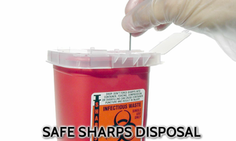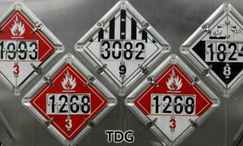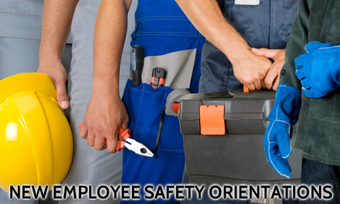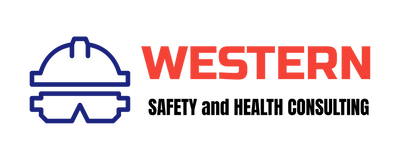WORKSAFEBC REGULATION AMENDMENTS
new storage rack regulations
On January 1, 2018, new regulations came into effect regulating the installation, inspection, use, and maintenance of steel storage racks. The new regulations Section 4.43.1 in the Occupational Health and Safety Regulation (OHSR) Storage Racks, Part 4: General Conditions and provide the requirements for employers to ensure the safety of their workers around storage racks.
• Types of storage racks that are included and excluded
• Competencies of the qualified person who installs and uninstalls storage racks
• Competencies of the qualified person who inspects storage racks
• Factors used to determine how frequently storage racks will be inspected by the qualified person
• How to comply with respect to existing racks where the employer does not have the manufacturer’s instructions.
• Types of storage racks that are included and excluded
• Competencies of the qualified person who installs and uninstalls storage racks
• Competencies of the qualified person who inspects storage racks
• Factors used to determine how frequently storage racks will be inspected by the qualified person
• How to comply with respect to existing racks where the employer does not have the manufacturer’s instructions.
Workplace impairment:
EMPLOYERS NEED TO preparE for cannabis legalization IN BC
To help employers prepare for the legalization of cannabis in BC, WorkSafeBC has prepared an information primer that summarizes the regulatory requirements related to workplace impairment. Current regulations prohibit workers from being impaired while they work and require employers to remove impaired workers from the workplace. This is currently the law in BC and would remain the law with the legalization of cannabis.
Sections 4.19 and 4.20 of the Occupational Health and Safety Regulation include the obligations of workers to advise their employer if their ability to safely perform their work is impaired for any reason, and to not knowingly do work where their impairment may create an undue risk to themselves or anyone else. The same sections of the Regulation include the obligations of employers to not assign impaired workers to activities where their impairment may create an undue risk to the worker or anyone else, and to ensure that workers whose impairment endangers the worker or anyone else, do not remain at the workplace.
Employers are encouraged to develop policies and procedures that address impairment in the workplace. Developing a clear impairment policy that takes a fitness-to-work approach to impairment, communicating the policy to workers, and applying it consistently can help employers manage their obligation to ensure workplace safety. The Regulation does not specifically require policies that incorporate impairment testing. Employers who wish to implement impairment testing, such as those whose workplaces include high-risk activities, should get advice from an employment lawyer about how to balance workplace safety, human rights, and privacy issues before implementing a program.
Sections 4.19 and 4.20 of the Occupational Health and Safety Regulation include the obligations of workers to advise their employer if their ability to safely perform their work is impaired for any reason, and to not knowingly do work where their impairment may create an undue risk to themselves or anyone else. The same sections of the Regulation include the obligations of employers to not assign impaired workers to activities where their impairment may create an undue risk to the worker or anyone else, and to ensure that workers whose impairment endangers the worker or anyone else, do not remain at the workplace.
Employers are encouraged to develop policies and procedures that address impairment in the workplace. Developing a clear impairment policy that takes a fitness-to-work approach to impairment, communicating the policy to workers, and applying it consistently can help employers manage their obligation to ensure workplace safety. The Regulation does not specifically require policies that incorporate impairment testing. Employers who wish to implement impairment testing, such as those whose workplaces include high-risk activities, should get advice from an employment lawyer about how to balance workplace safety, human rights, and privacy issues before implementing a program.
NEW FIRST AID TRAINING REQUIREMENTS IN BC, EFFECTIVE JULY 01, 2018
First aid attendants in BC are a lifeline for those who become injured or ill in the workplace. WorkSafeBC regularly reviews the occupational first aid training program in BC to ensure that it is keeping up with best practices. In order to cover a broader spectrum of medical issues, and align treatment protocols with BC, Canadian and international best practices, occupational first aid training requirements are changing on July 1, 2018.
Here’s what you need to know:
Here’s what you need to know:
- Current first aid training certification in BC remains valid until the expiry date on the certificate.
- The new first aid training certificates in BC, which have a different look, will be issued beginning July 1, 2018, for those who are renewing or taking training for the first time.
- First aid attendants in BC have the option of taking supplementary training to upgrade their skills; however, they will only receive a new certificate if they complete the new training program in its entirety.
HEALTH AND SAFETY REGULATION CHANGES FOR E-CIGARETTES
Changes to the Tobacco Control Act and Regulation to do with e-cigarettes (aka “vapour products”) became effective September 1, 2016; related amendments to the Occupational Health and Safety Regulation are also in the works, with May 1, 2017, as the proposed effective date and an opportunity for stakeholders to comment by October 7, 2016.
There are two changes to the tobacco control legislation and regulation of note for employers/workplaces:
The changes included renaming the act and regulation to the Tobacco and Vapour Products Control Act and the Tobacco and Vapour Products Control Regulation, to include oversight of e-cigarettes, as well as changes to impose similar restrictions to those already on tobacco products for people under 19 years of age.
Related amendments to the OHS Regulation to accommodate the changes above affect the following sections of Part 4, General Conditions:
There are two changes to the tobacco control legislation and regulation of note for employers/workplaces:
- In addition to tobacco smoking or holding lighted tobacco, the prohibited activities in proximity to a doorway, window, or air intake of an indoor workplace have been expanded to include use of an e-cigarette or holding an activated e-cigarette.
- The prescribed distance restricting prohibited activities from a doorway, window, or air intake of an indoor workplace has been increased from 3 metres to 6 metres.
The changes included renaming the act and regulation to the Tobacco and Vapour Products Control Act and the Tobacco and Vapour Products Control Regulation, to include oversight of e-cigarettes, as well as changes to impose similar restrictions to those already on tobacco products for people under 19 years of age.
Related amendments to the OHS Regulation to accommodate the changes above affect the following sections of Part 4, General Conditions:
- 4.81/4.82 Controlling exposure to environmental tobacco smoke;
- 4.81(b) Safe outdoor location; and
- 4.82(1) Entry into indoor areas where smoking is permitted.
WORKPLACE MENTAL HEALTH CLAIMS
Changes to Section 5.1 of the Workers Compensation Act have expanded the scope of how mental health disorders relating to the workplace may be accepted. The Act now provides coverage for mental disorders if the disorder is caused by the workplace.
WorkSafeBC continues to provide compensation for conditions such as Post Traumatic Stress Disorder (PTSD) due to things like witnessing a disturbing event (such as a robbery or violent act), but WorkSafeBC can now provide compensation for a mental disorder caused by significant workplace stressors such as bullying or harassment.
In order to receive compensation, a claimant must prove that the issues occurred at or because of work. WorkSafeBC will contact the worksite to investigate the claim.
If WorkSafeBC verifies the event(s), the claimant will need to undergo a diagnosis by a psychologist or psychiatrist of a mental condition in the American Psychiatric Association's Diagnostic and Statistical Manual of Mental Disorders (DSM IV), who will determine that the condition was predominately caused by the workplace.
"Stress" is not recognized in the DSM IV and therefore is not compensable.
Changes to Section 5.1 of the Workers Compensation Act have expanded the scope of how mental health disorders relating to the workplace may be accepted. The Act now provides coverage for mental disorders if the disorder is caused by the workplace.
WorkSafeBC continues to provide compensation for conditions such as Post Traumatic Stress Disorder (PTSD) due to things like witnessing a disturbing event (such as a robbery or violent act), but WorkSafeBC can now provide compensation for a mental disorder caused by significant workplace stressors such as bullying or harassment.
In order to receive compensation, a claimant must prove that the issues occurred at or because of work. WorkSafeBC will contact the worksite to investigate the claim.
If WorkSafeBC verifies the event(s), the claimant will need to undergo a diagnosis by a psychologist or psychiatrist of a mental condition in the American Psychiatric Association's Diagnostic and Statistical Manual of Mental Disorders (DSM IV), who will determine that the condition was predominately caused by the workplace.
"Stress" is not recognized in the DSM IV and therefore is not compensable.
WHMIS 2015: GLOBALLY HARMONIZED SYSTEM
Overview
WHMIS was updated in 2015 to align with the Globally Harmonized System of Classification and Labelling of Chemicals (GHS) developed by the United Nations. The updated classifications, labels, and safety data sheets will improve communication, clarity, and worker safety. Although the system has changed, the responsibilities of workers, employers, and suppliers remain unchanged.
Hazardous products can cause injuries or diseases in workers. The goal of WHMIS is to provide workers with the information they need to stay safe on the job. With WHMIS, hazardous products must have a label and safety data sheet (SDS). Labels identify the product's hazards and precautionary measures. Safety data sheets, which must be available on the work site, provide more detailed information. If the product is not a hazardous product by definition, the employer may still have to provide training, supervision, and safe work procedures.
What has changed with WHMIS 2015
WHMIS 2015 aligns the hazards classification and communication requirements with those used in the U.S. and by other major trading partners. The key changes from WHMIS 1988 to WHMIS 2015 are:
Hazard classes and categories
WHMIS 2015 divides hazardous products into two major hazard groups: physical hazards and health hazards. These two groups are further divided into hazard classes, which group together products with similar properties.
Physical hazards
Health hazards
Each hazard class contains at least one category, which is assigned a number. Categories may also be called "types," which are assigned an alphabetical letter. In a few cases, subcategories are also specific and identified with a number and a letter.
The category tells you how hazardous a product is:
Pictograms
Pictograms are graphic images that, at a glance, depict the hazard(s) associated with a specific product. Pictograms are assigned to specific hazard classes or categories. Some lower-risk hazardous products meet the criteria for hazard classes but do not require a pictogram.
The pictograms, as shown below, will be on the supplier labels and the SDS of the hazardous product.
Pictograms
Labels
Hazardous products used in the workplace must be labelled. Labels alert the worker to the major hazards as well as basic precautions or safety steps that should be taken. In most cases suppliers are responsible for labelling hazardous products. Employers need to ensure that all hazardous products are labelled, especially if a hazardous product is transferred from one container to another.
There are two main types of labels: supplier labels and workplace labels.
Supplier labels are provided or attached by the supplier of the hazardous product. Most of the label elements are standardized, and hazard classes and categories have a prescribed signal word, hazard statements, pictogram(s), and precautionary statement(s). Supplier labels must be created in English and French. Suppliers must also meet label requirements for shipping. Depending on how the product is being shipped, the Transportation of Dangerous Goods Act may require additional labels.
Workplace labels are less detailed than supplier labels. A workplace label provides the following information about a hazardous product:
Workplace labels are required when:
Safety data sheets
Every product classified as a hazardous product under WHMIS 2015 that is found in a workplace must have a safety data sheet (SDS). An SDS tells you:
They are usually written by the manufacturer or supplier of the product. In some circumstances, an employer may be required to prepare an SDS (e.g., when the product is produced and used exclusively in that workplace). WHMIS requires a standard 16-section SDS. All information on the SDS must appear in the specified order. In British Columbia, SDSs must be checked every three years to ensure they include the most current information.
Confidential business information
Confidential business information (CBI) refers to specific product information that suppliers or employers who are manufacturers are permitted to withhold from an SDS or label for a period of three years. In the U.S., CBI may be called trade secrets or proprietary information. Under WHMIS, a supplier can make a request to Health Canada to protect certain information that gives a company an economic advantage over competitors. Crucial information such as health hazards may never be withheld. If the term "trade secret" or "proprietary information" appears on an SDS, it must have a Hazardous Materials Information Review Act (HMIRA) registration number and date.
WHMIS was updated in 2015 to align with the Globally Harmonized System of Classification and Labelling of Chemicals (GHS) developed by the United Nations. The updated classifications, labels, and safety data sheets will improve communication, clarity, and worker safety. Although the system has changed, the responsibilities of workers, employers, and suppliers remain unchanged.
Hazardous products can cause injuries or diseases in workers. The goal of WHMIS is to provide workers with the information they need to stay safe on the job. With WHMIS, hazardous products must have a label and safety data sheet (SDS). Labels identify the product's hazards and precautionary measures. Safety data sheets, which must be available on the work site, provide more detailed information. If the product is not a hazardous product by definition, the employer may still have to provide training, supervision, and safe work procedures.
What has changed with WHMIS 2015
WHMIS 2015 aligns the hazards classification and communication requirements with those used in the U.S. and by other major trading partners. The key changes from WHMIS 1988 to WHMIS 2015 are:
- More comprehensive hazard classification criteria
- New hazard classes
- Physical hazard criteria now consistent with the Transportation of Dangerous Goods (TDG) Regulations
- Standardized language
- New requirements for supplier labels
- New standardized 16-section safety data sheet (SDS) format
Hazard classes and categories
WHMIS 2015 divides hazardous products into two major hazard groups: physical hazards and health hazards. These two groups are further divided into hazard classes, which group together products with similar properties.
Physical hazards
Health hazards
Each hazard class contains at least one category, which is assigned a number. Categories may also be called "types," which are assigned an alphabetical letter. In a few cases, subcategories are also specific and identified with a number and a letter.
The category tells you how hazardous a product is:
- Category 1 is always the most hazardous class
- If Category 1 is further divided, Category 1A within the same hazard class will be more hazardous than Category 1B
- Category 2 within the same hazard class is more hazardous than Category 3, and so on
Pictograms
Pictograms are graphic images that, at a glance, depict the hazard(s) associated with a specific product. Pictograms are assigned to specific hazard classes or categories. Some lower-risk hazardous products meet the criteria for hazard classes but do not require a pictogram.
The pictograms, as shown below, will be on the supplier labels and the SDS of the hazardous product.
Pictograms
Labels
Hazardous products used in the workplace must be labelled. Labels alert the worker to the major hazards as well as basic precautions or safety steps that should be taken. In most cases suppliers are responsible for labelling hazardous products. Employers need to ensure that all hazardous products are labelled, especially if a hazardous product is transferred from one container to another.
There are two main types of labels: supplier labels and workplace labels.
Supplier labels are provided or attached by the supplier of the hazardous product. Most of the label elements are standardized, and hazard classes and categories have a prescribed signal word, hazard statements, pictogram(s), and precautionary statement(s). Supplier labels must be created in English and French. Suppliers must also meet label requirements for shipping. Depending on how the product is being shipped, the Transportation of Dangerous Goods Act may require additional labels.
Workplace labels are less detailed than supplier labels. A workplace label provides the following information about a hazardous product:
- The product identifier (name)
- Safe handling information
- A reference to the SDS
Workplace labels are required when:
- A hazardous product is made at the workplace and used in that workplace
- A hazardous product is decanted (e.g., transferred or poured) into another container
- A supplier label is lost or cannot be read
Safety data sheets
Every product classified as a hazardous product under WHMIS 2015 that is found in a workplace must have a safety data sheet (SDS). An SDS tells you:
- The product's hazards
- How to use the product safely
- What to expect if the recommendations aren't followed
- How to recognize symptoms of exposure
- What to do if emergencies occur
They are usually written by the manufacturer or supplier of the product. In some circumstances, an employer may be required to prepare an SDS (e.g., when the product is produced and used exclusively in that workplace). WHMIS requires a standard 16-section SDS. All information on the SDS must appear in the specified order. In British Columbia, SDSs must be checked every three years to ensure they include the most current information.
Confidential business information
Confidential business information (CBI) refers to specific product information that suppliers or employers who are manufacturers are permitted to withhold from an SDS or label for a period of three years. In the U.S., CBI may be called trade secrets or proprietary information. Under WHMIS, a supplier can make a request to Health Canada to protect certain information that gives a company an economic advantage over competitors. Crucial information such as health hazards may never be withheld. If the term "trade secret" or "proprietary information" appears on an SDS, it must have a Hazardous Materials Information Review Act (HMIRA) registration number and date.
JOINT HEALTH AND SAFETY COMMITTEE REGULATION CHANGES
When you need a joint health and safety committee
If your workplace has 20 or more workers, you need a joint committee. This includes any workplace where there are 20 or more workers employed at the workplace for longer than a month. WorkSafeBC may also order that a joint committee be established in any other workplace.
When you need a worker health and safety representative
If your workplace has more than 9 but fewer than 20 workers, you need to have a worker health and safety representative. This includes any workplace where there are 10 or more workers employed at the workplace for longer than a month.
What joint committees and worker health and safety representatives do
The joint committee plays an important role in your occupational health and safety program, giving workers and employers a way to work together to identify and find solutions to workplace health and safety issues. The joint committee has the following specific duties and functions:
In workplaces where a worker health and safety representative is required, the representative has the same duties and functions as a joint committee, to the extent practicable.
Mandatory training and annual education leave
The requirements for mandatory training are different for joint committee members and worker health and safety representatives. All joint committee members selected on or after April 3, 2017 must receive eight hours of training and instruction. All worker health and safety representatives selected on or after April 3, 2017 must receive four hours of training. See Joint committee member and worker health and safety representative training for more information.
Annual education leave
All joint health and safety committee members and worker health and safety representatives are entitled to eight hours of leave per year to attend occupational health and safety training. For information on courses near you, contact local OHS training providers. OHS courses are considered acceptable if the employer follows a reasonable process of assessing the training needs of committee members and selects appropriate training programs.
Evaluation of joint committees
Section 3.26 of the Regulation requires a written evaluation to be conducted annually to determine the effectiveness of the joint committee. The intent of the evaluation is to determine whether the joint committee is in compliance with the Act and Regulation, and to assess whether the joint committee has been effective in fulfilling its role. Evaluations should also identify improvements to be considered and implemented.
To assist in the evaluation process, committees can use the Joint Health and Safety Committee Evaluation Tool. You are not required to use this template, however, and can use your own committee evaluation tool as long as it includes all the information required by section 3.26 of the Regulation.
If your workplace has 20 or more workers, you need a joint committee. This includes any workplace where there are 20 or more workers employed at the workplace for longer than a month. WorkSafeBC may also order that a joint committee be established in any other workplace.
When you need a worker health and safety representative
If your workplace has more than 9 but fewer than 20 workers, you need to have a worker health and safety representative. This includes any workplace where there are 10 or more workers employed at the workplace for longer than a month.
What joint committees and worker health and safety representatives do
The joint committee plays an important role in your occupational health and safety program, giving workers and employers a way to work together to identify and find solutions to workplace health and safety issues. The joint committee has the following specific duties and functions:
- Identify situations that may be unhealthy or unsafe for workers, and advise on effective systems for responding to those situations
- Consider, and promptly deal with complaints relating to the health and safety of workers
- Consult with workers and the employer on issues related to occupational health and safety, and the occupational environment
- Make recommendations to the employer and the workers for the improvement of the occupational health and safety, and the occupational environment of workers
- Make recommendations to the employer on educational programs promoting the health and safety of workers and compliance with Part 3 of the Workers Compensation Act and the regulations, and to monitor their effectiveness
- Advise the employer on programs and policies required under the regulations for the workplace, and to monitor their effectiveness
- Advise the employer on proposed changes to the workplace, including significant proposed changes to equipment and machinery, or the work processes that may affect the health or safety of workers
- Ensure that accident investigations and regular inspections are carried out as required
- Participate in inspections, investigations and inquiries as provided in Part 3 of the Workers Compensation Act and Section 3 of the Regulation
In workplaces where a worker health and safety representative is required, the representative has the same duties and functions as a joint committee, to the extent practicable.
Mandatory training and annual education leave
The requirements for mandatory training are different for joint committee members and worker health and safety representatives. All joint committee members selected on or after April 3, 2017 must receive eight hours of training and instruction. All worker health and safety representatives selected on or after April 3, 2017 must receive four hours of training. See Joint committee member and worker health and safety representative training for more information.
Annual education leave
All joint health and safety committee members and worker health and safety representatives are entitled to eight hours of leave per year to attend occupational health and safety training. For information on courses near you, contact local OHS training providers. OHS courses are considered acceptable if the employer follows a reasonable process of assessing the training needs of committee members and selects appropriate training programs.
Evaluation of joint committees
Section 3.26 of the Regulation requires a written evaluation to be conducted annually to determine the effectiveness of the joint committee. The intent of the evaluation is to determine whether the joint committee is in compliance with the Act and Regulation, and to assess whether the joint committee has been effective in fulfilling its role. Evaluations should also identify improvements to be considered and implemented.
To assist in the evaluation process, committees can use the Joint Health and Safety Committee Evaluation Tool. You are not required to use this template, however, and can use your own committee evaluation tool as long as it includes all the information required by section 3.26 of the Regulation.
|
Fourteen Changes to the WorkSafeBC Occupational Health and Safety Regulation in BC Have Been Finalized. Everyone should review the changes carefully, as there are many that apply to a broad range of industries. Amendments to the Occupational Health and Safety Regulation in BC will become effective on May 1, 2017. |
So What’s Changing?
Combustible and Flammable Liquids
The definitions of combustible and flammable liquids will be updated under section 1.1 to remove outdated WHMIS 1988 terms. The flashpoint temperature criteria will remain the same and continue to be consistent with BC Fire Code definitions.
Area Guards and Handrails
Those that work at heights should take note of the regulations surrounding guards and handrails. Section 4.56 is getting a new subsection that makes it easier to have compliant movable work platforms and scaffolds that align with applicable CSA and ANSI standards.
Environmental Tobacco Smoke and E-cigarette Vapour
Sections 4.80.1, 4.81, 4.82, and 28.9 are getting updated to include e-cigarette vapour. The changes follow the recent B.C. Ministry of Health amendments to the Tobacco Control Act and the Tobacco Control Regulation to include e-cigarettes and e-cigarette vapour. Employers and workers should be aware that the B.C. Ministry of Health amendments have prohibited the use of e-cigarettes in many workplaces. There were also changes to tobacco use laws which include a non-smoking buffer zone increase from three to six metres. These new laws have been effective since September 1, 2016, and changes to the Regulation are meant to align with them.
Combustible or Flammable Air Contaminants
If you work with combustible or flammable materials, you should take note of the changes to section 5.71 (2) under Chemical Agents and Biological Agents. The revised Regulation adds combustible air contaminants to section 5.71 (2) and ensures compliance with the BC Electrical Code for related equipment contacting the air stream of a ventilation system.
Inventory of Asbestos-Containing Materials
Who is ultimately responsible for preparing and keeping a current inventory of asbestos-containing materials in the workplace? Changes to the Regulation make it clear that both the owner of the worksite and the employer are responsible. The amendments to sections 6.4 to 6.66 and 6.32 under Substance Specific Requirements add obligations for the owner to ensure asbestos inventories are completed, and to clarify what information must be included in the inventory and the retention of records associated with the inventory.
Lead
Sections 6.58 to 6.69 are being expanded with the goal of providing clearer and more detailed instructions on the handling of lead-containing products and prevention of worker exposure. One of the changes that may benefit employers: the revised regulation will allow a qualified person to determine whether peer-reviewed research exposure data, or previous exposure monitoring data, may be used to estimate worker exposure during equivalent work operations — either to evaluate the effectiveness of existing controls or to develop effective controls.
Rock Dust and Silica
Several sections in Part 6 of the Regulation pertaining to rock dust are being updated. Part 6 of the Regulation will have a new heading, indicating the provisions apply to respirable crystalline silica (RCS) and rock dust. Sections 6.110 to 6.112 of the Regulation are being repealed and replaced with new provisions that are designed to protect workers from the risks of RCS. Sections 6.113 to 6.115 will be maintained with minor edits. Similar to the lead provisions, the changes will allow a qualified person to determine whether peer-reviewed research exposure data, or previous exposure monitoring data, may be used to estimate worker exposure during equivalent work operations — either to evaluate the effectiveness of existing controls or to develop effective controls.
Chassis Dynamometer
The purpose of the amendments is to incorporate the safeguarding requirements for the testing of motor vehicles on chassis dynamometers into the Regulation under section 12.83.1.
Scaffolds
Some types of hoists, such as certain kinds of light-duty portable material hoists, are mounted onto and supported by scaffolds. These scaffolds need to have engineering oversight in order to ensure that the attachment to the scaffold is adequate to support the hoist and the loads delivered. A new subsection has been added to 13.11 to require scaffolds that support powered hoists or cranes be constructed, installed, and used according to a professional engineer’s instructions.
Cranes and Hoists
If you work with cranes and hoists, it’s a good time to review Part 14 of the Regulation. There are some minor changes to remove unnecessary definitions in section 14.1, and the addition of one line of text to 14.2(8) to exclude light duty portable material hoists from the requirement to meet the CSA Standard cited there. While both changes seem minor, their goal is to ensure requirements regarding cranes and hoists are consistent and remove impractical restrictions on light-duty, unsophisticated hoists. Employers who wish to understand more about what constitutes a light-duty portable material hoist should consult the Regulation and Guidelines. Changes to sections 14.5 and 14.11 also further clarify the rated capacity of cranes, hoists, and monorail cranes. And, changes to section 14.81 incorporate the Prevention Manual policy on how testing should be performed for limit and warning devices on tower cranes.
Notice of Project for Construction
Various sections of the Regulation require employers, owners, or prime contractors to notify WorkSafeBC in writing about the undertaking of certain projects. The Notice of Project (NOP) form is completed and submitted to WorkSafeBC prior to the project starting. One of the purposes of the NOP is to notify WorkSafeBC of certain hazardous work so WorkSafeBC officers may contact the parties involved or plan a visit to the site. Currently, only owners or prime contractors are required to ensure an NOP is submitted before starting construction projects involving asbestos, lead, and other similar work activities, which may expose workers to a significant risk of occupational disease. The amendments expand the scope of the NOP submission responsibility to also include employers performing these projects. The notice period to submit an NOP to WorkSafeBC has increased from 24 to 48 hours before the work activity begins at the worksite. The amendments also require that the information be resubmitted to WorkSafeBC as soon as possible if any of the information in the NOP changes significantly.
Underground Supervisors
If you’ve been confused about underground supervisors, you aren’t alone. Section 22.12 (1) and (2) is being completely revised. These revisions bring clarity to what the role of the underground supervisor is, as well as how to be considered qualified for the job. As these changes are extensive, employers are encouraged to read through the amendment document fully.
Saw Chain Shot
If you’ve worked with a hydraulic saw chain for cutting trees and logs, then you are probably aware of the dangerous issue of saw chain breakage. When a saw chain breaks it can separate into fragments and generate projectiles moving at ballistic speeds at the operators cab. New section 26.13.4 provides details on safety controls for saw chain shot. Anyone who works with related mobile forestry equipment should make themselves fully aware of these changes.
Why Were These Changes Made?
Many of these changes are the result of several stages of consultation and feedback. Before most amendments to the Regulation are released for public consultation, WorkSafeBC staff meets with a group of subject matter experts, from both worker and employer communities, as well as other groups. The purpose of these pre-consultations is to give external experts an opportunity to identify issues related to the area under review, and provide WorkSafeBC staff with an opportunity to clarify issues
JOINT HEALTH AND SAFETY COMMITTEES IN BC
Changes to the Occupational Health and Safety Regulation in BC relating to joint health and safety committees took effect on, April 3, 2017.
These changes include:
Changes to the Occupational Health and Safety Regulation in BC relating to joint health and safety committees took effect on, April 3, 2017.
These changes include:
- Amendments to the mandatory minimum training requirements for health and safety committee members in BC and worker health and safety representatives.
- Mandatory annual evaluation of joint health and safety committee effectiveness in BC.
- Clarification of what participation by employer and worker representatives in employer accident / incident investigations involves.
OCCUPATIONAL HEALTH AND SAFETY EDUCATION COURSES IN BC
Here are some recognized occupational health and safety educational bodies in BC, which provide quality OHS courses for individuals looking for a career in the occupational health and safety field in BC:
BCIT Diploma of Technology (OHS) - Full-time 2 Years
BCIT’s Occupational Health and Safety Diploma program is the most comprehensive and recognized in Canada. The Diploma program is the most comprehensive training of its kind in Canada. Students learn the skills they need to start a great career in health and safety, in any industry and workplace. Click here for more information.
BCIT Certificate of Technology (OHS) - Part-time, Distance and On-line
BCIT also has an OHS certificate program, which requires five years of practical experience and high school graduation. Some of the certificate courses are transferable to the diploma program. Click here for more information.
University of Victoria Certificate (EHS) - Online
UVic's online Certificate Program in Environmental and Occupational Health (EOH) is one of the leading workplace health and safety training programs of its kind in Canada. You will learn about the latest Occupational Health and Safety (OHS) regulations related to workplace health and safety, strategies for meeting the health needs of employees in the workplace, and how to manage the impacts of the workplace on employee safety and the environment.
Whether you are already working in the field and want to specialize in occupational, environmental and health training, or looking for a career in a rapidly expanding field, this program will expand your career options by teaching you skills that you can put to use in many areas. Click here for more information.
Simon Fraser University OHS Certificate - Part-time, In-class and On-line
SFU's part-time Occupational Health and Safety (commonly known as OHS and OH&S) Certificate, you’ll learn to keep employees safe and healthy by planning, promoting, implementing and evaluating workplace safety management programs.
Six focused OHS courses will teach you about workplace health and safety systems, including the fundamentals of occupational hygiene, safety hazard recognition, organizational behaviour within the context of Canadian business, and provincial and federal health and safety legislation including the Workers Compensation Act. Click here for more information.
CSO: Construction Safety Officer
A Construction Safety Officer (CSO) is responsible for ensuring required safety protocols are followed on a work site. A CSO will conduct safety orientation for new workers, and give crew-talks to keep personnel informed about safety. They will also conduct and document site inspections, site hazard audits, and maintain site safety plans to ensure that work being done on a site follows safety regulation.
The Construction Safety Officer Certification program offered by the Applied Science Technologists and Technicians of BC is the only Construction Safety Certification in Canada, awarded by a professional association. The ASTTBC Construction Safety Certification program is designed to allow safety practitioners to build their careers within a professional association. This career growth requires accumulated experience, a commitment to continuing education, and an ethical and professional approach to the job. Click here for more information.
BCIT also provides training to students who wish to pursue a career as a safety professional through the CNST 1100 - Construction Safety Officer Training course. Click here for for information.
NCSO – National Construction Safety Officer
The NCSO, through the British Columbia Construction Safety Alliance, is recognized as a national program that came into effect January 1,2017. The NCSO program combines formal education, training and recognition of experience in construction safety coordination including administration and implementation of the company’s health and safety program. The title of NCSO has been created to harmonize and standardize the certification for construction safety professionals in Canada.
The Canadian Federation of Construction Associations has approved a new national credential designed to replace a variety of similar provincial designations. Among those provincial health and safety associations transitioning to the National Construction Safety Officer (NCSO) is the BCCSA, which will offer the designation in place of the Construction Safety Specialist (CSS) starting January 1, 2017. The CSS has been offered by the BCCSA for the last several years. Click here for more information.
BCIT Diploma of Technology (OHS) - Full-time 2 Years
BCIT’s Occupational Health and Safety Diploma program is the most comprehensive and recognized in Canada. The Diploma program is the most comprehensive training of its kind in Canada. Students learn the skills they need to start a great career in health and safety, in any industry and workplace. Click here for more information.
BCIT Certificate of Technology (OHS) - Part-time, Distance and On-line
BCIT also has an OHS certificate program, which requires five years of practical experience and high school graduation. Some of the certificate courses are transferable to the diploma program. Click here for more information.
University of Victoria Certificate (EHS) - Online
UVic's online Certificate Program in Environmental and Occupational Health (EOH) is one of the leading workplace health and safety training programs of its kind in Canada. You will learn about the latest Occupational Health and Safety (OHS) regulations related to workplace health and safety, strategies for meeting the health needs of employees in the workplace, and how to manage the impacts of the workplace on employee safety and the environment.
Whether you are already working in the field and want to specialize in occupational, environmental and health training, or looking for a career in a rapidly expanding field, this program will expand your career options by teaching you skills that you can put to use in many areas. Click here for more information.
Simon Fraser University OHS Certificate - Part-time, In-class and On-line
SFU's part-time Occupational Health and Safety (commonly known as OHS and OH&S) Certificate, you’ll learn to keep employees safe and healthy by planning, promoting, implementing and evaluating workplace safety management programs.
Six focused OHS courses will teach you about workplace health and safety systems, including the fundamentals of occupational hygiene, safety hazard recognition, organizational behaviour within the context of Canadian business, and provincial and federal health and safety legislation including the Workers Compensation Act. Click here for more information.
CSO: Construction Safety Officer
A Construction Safety Officer (CSO) is responsible for ensuring required safety protocols are followed on a work site. A CSO will conduct safety orientation for new workers, and give crew-talks to keep personnel informed about safety. They will also conduct and document site inspections, site hazard audits, and maintain site safety plans to ensure that work being done on a site follows safety regulation.
The Construction Safety Officer Certification program offered by the Applied Science Technologists and Technicians of BC is the only Construction Safety Certification in Canada, awarded by a professional association. The ASTTBC Construction Safety Certification program is designed to allow safety practitioners to build their careers within a professional association. This career growth requires accumulated experience, a commitment to continuing education, and an ethical and professional approach to the job. Click here for more information.
BCIT also provides training to students who wish to pursue a career as a safety professional through the CNST 1100 - Construction Safety Officer Training course. Click here for for information.
NCSO – National Construction Safety Officer
The NCSO, through the British Columbia Construction Safety Alliance, is recognized as a national program that came into effect January 1,2017. The NCSO program combines formal education, training and recognition of experience in construction safety coordination including administration and implementation of the company’s health and safety program. The title of NCSO has been created to harmonize and standardize the certification for construction safety professionals in Canada.
The Canadian Federation of Construction Associations has approved a new national credential designed to replace a variety of similar provincial designations. Among those provincial health and safety associations transitioning to the National Construction Safety Officer (NCSO) is the BCCSA, which will offer the designation in place of the Construction Safety Specialist (CSS) starting January 1, 2017. The CSS has been offered by the BCCSA for the last several years. Click here for more information.


